 Last additions - elibrary Last additions - elibrary |

brahmavihara.pdfBrahmavihara Dhamma4256 viewsVen. Mahasi Sayadaw
This Brahmavihara Dhamma (Divine Abidings) expounded by the late Venerable Mahasi Sayadaw, reveals the systematic method of developing Metta, loving-kindness towards all beings and the way to lead a life of holiness. The style of presentation and the informative materials contained therein stand witness to the depth and wealth of spiritual and scriptural knowledge of the eminent author. A careful reading of this Dhamma or teachings, followed by an unfailing practice of meditation that has been clearly presented in this text will, I believe, amount to storing a fortune in the shape of happiness in the present lifetime as well as higher spiritual attainment.Jan 01, 1970
|
|

4sublime_states.pdfThe Four Sublime States5118 viewsVen. Nyanaponika Thera
Four sublime states of mind have been taught by the Buddha: Loving-kindness (metta), Compassion (karuna), Sympathetic Joy (mudita), Equanimity (upekkha) These four attitudes are said to be excellent or sublime because they are the right or ideal way of conduct towards living beings They provide, in fact, the answer to all situations arising from social contact. They are the great removers of tension, the great peacemakers in social conflict, and the great healers of wounds suffered in the struggle of existence. They level social barriers, build harmonious communities, awaken slumbering magnanimity long forgotten, revive joy and hope long abandoned, and promote human brotherhood against the forces of egotism.Jan 01, 1970
|
|
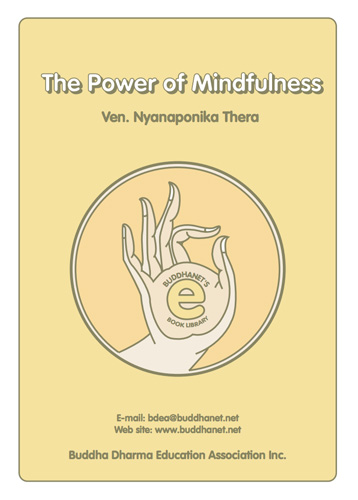
powermindfulness.pdfThe Power of Mindfulness4314 viewsIn the case of mindfulness, it required a genius like the Buddha to discover the hidden talent in the modest garb, and to develop the vast inherent power of that potent seed. It is, indeed, the mark of a genius to perceive and to harness the power of the seemingly small. Here, truly, it happens that, what is little becomes much. A revaluation of values takes place. The standards of greatness and smallness change. Through the master mind of the Buddha, mindfulness is finally revealed as the point where the vast revolving mass of world suffering is levered out of its twofold anchorage in ignorance and craving.Jan 01, 1970
|
|

allmetta.pdfLoving-kindness Meditation6309 viewsVen. Sujiva
Loving-kindness Meditation or Metta Bhavana and other Sublime States by Ven. Sujiva is a clear and comprehensive step-by-step explanation of the systematic practice. It is based on the Visuddhimagga or The Path of Purification by Buddhagosha. The texts describe metta as characterised by promoting the aspect of welfare. Amity, goodwill, friendliness and loving-kindness are some words used to describe this mental state. There is no better way to know it than to study it as it occurs in one's own and others' minds. It is a totally unselfish and pure state of mind that brings profit to oneself and others now and hereafter.Jan 01, 1970
|
|
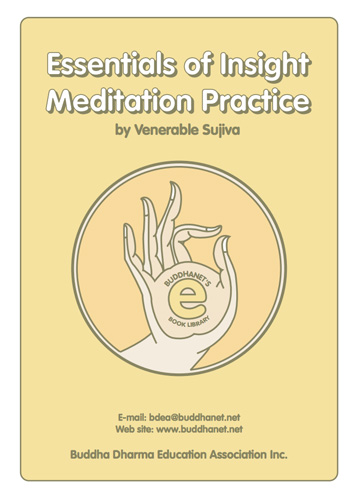
essentials.pdfEssentials of Insight Meditation Practice6363 viewsThe ultimate aim of insight meditation is to free one from the unsatisfactoriness of cyclic existence. Readers may also find numerous quotations of the Buddha's teaching on mindfulness, detachment and liberation throughout the entire book. Those verses act as a source of inspiration and purpose to put vipassana into practice - a practice that brings about insight into the three universal characteristics of unsatisfactoriness, impermanence and non-self which leads one into detachment and ultimate liberation.Jan 01, 1970
|
|
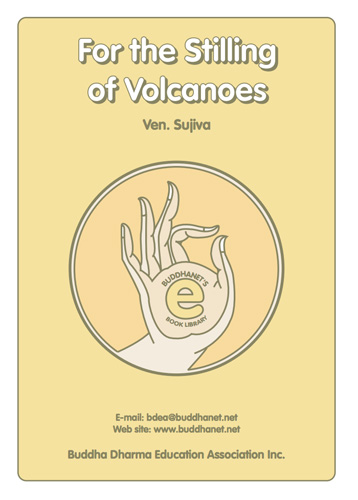
volcanos.pdfFor the Stilling of Volcanoes3062 viewsInsight Meditation as explained by Ven. Sujiva: It is not an task easy to approach such a profound topic as Insight Meditation in simple terms. But we have got to start somewhere. After some years of introducing this type of meditation, I still find that there is a lack of introductory material for those without knowledge of Buddhism. What is available is often extremely technical and loaded with ancient Indian terminology. There are some words in the English vocabulary which we can never hope to substitute perfectly. Even in this booklet I have used some English words such as 'conditioned' and 'suffering' which need special explanation when used in a Buddhist sense - but I have tried to come up with something easier to read and understand.Jan 01, 1970
|
|

03_seeing_the_elements.pdf03 Perceiving Impermanence4656 viewsPatrick Kearney
Perceiving impermanence. Discusses the centrality of the concept of impermanence (aniccata) to the Buddha's approach to insight, and explore the elements of earth, water, fire and air.Jan 01, 1970
|
|

02_contemplating_movement.pdf02 Contemplating Movement5059 viewsPatrick Kearney
Contemplating movement. Here we explore the nature of distraction and its relationship to the fact of change. This brings us to insight meditation, and incorporating movement into the practice. We begin walking meditation, and introduce the standing posture.Jan 01, 1970
|
|
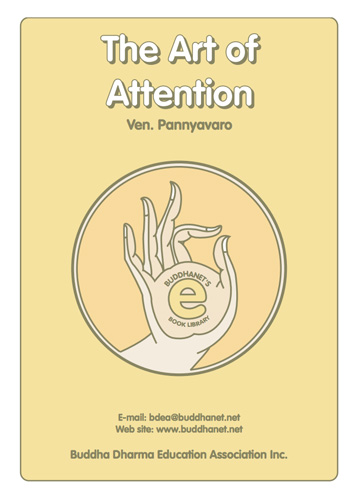
artofatt.pdfThe Art of Attention7998 viewsThis is a handbook on the art of meditative attention or meditating for insight. It deals with the basics of awareness meditation. There is practical instruction on how to do sitting and walking meditation and how to apply awareness in daily activities based on the Insight Meditation (Vipassana) tradition. The purpose of this handbook is to give the beginner to awareness meditation a guide to the basics of the practice, with the emphasis on its practical application to daily life.Jan 01, 1970
|
|
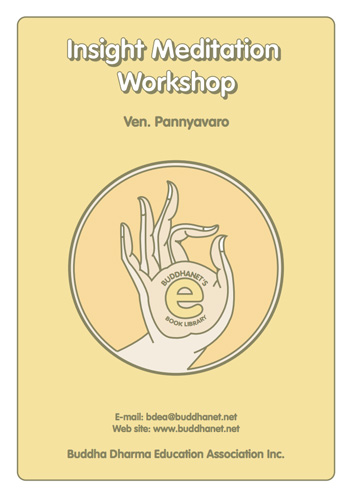
medwshop.pdfInsight Meditation Workshop Online3860 viewsMeditation is the intelligent heart of the Buddha's way; the only criterion is that you should apply it to daily life. The purpose of this meditation course is not to create a system of beliefs, but rather to give guidance on how to see clearly into the nature of the mind. In this way, you can have firsthand understanding of the way things are, without reliance on opinions or theories - a direct experience, which has its own vitality. This course has been prepared with both beginners and experienced practitioners in mind.Jan 01, 1970
|
|
| 1212 files on 122 page(s) |
 |
 |
 |
117 |  |
 |
 |
|
